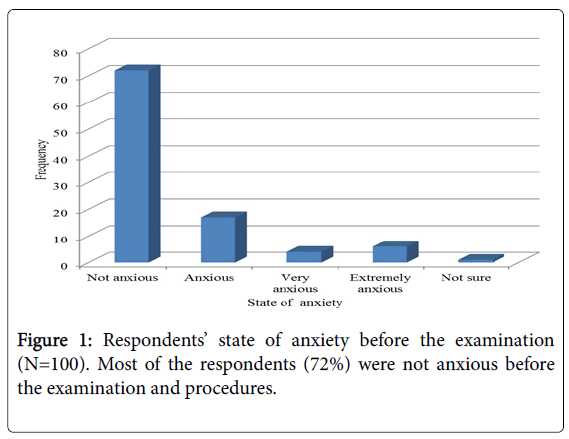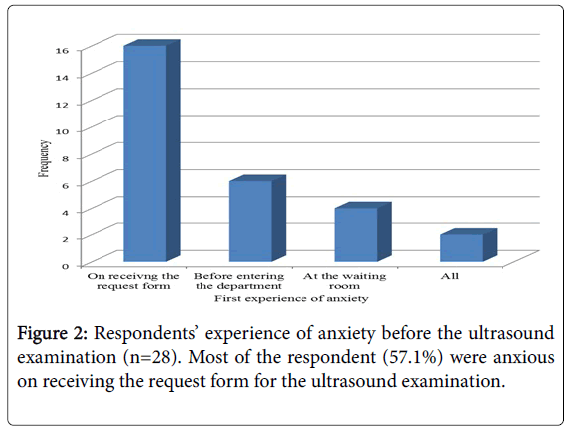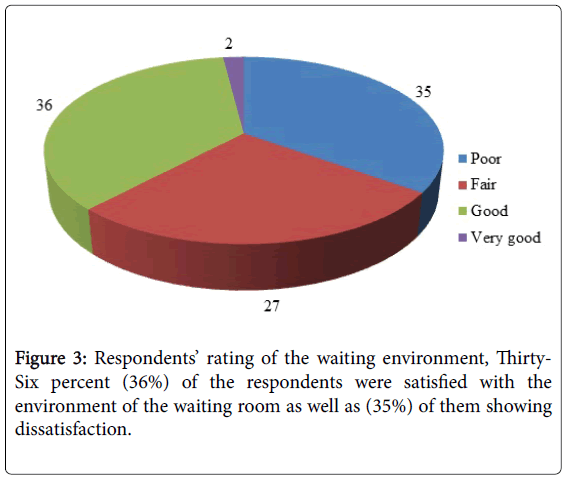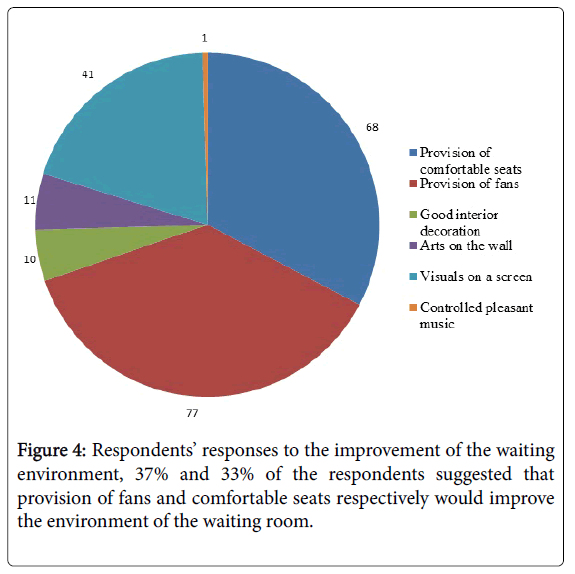Research Article Open Access
Anxiety Levels among Pregnant Women Awaiting Ultrasound Examination in Ghana
Kyei KA*, Bamfo-Quaicoe K, Antwi WK, Vanderpuye V, Banson R and Atuwo-Ampoh DVSchool of Allied Health Sciences, University of Ghana, Ghana
- Corresponding Author:
- Kyei KA
School of Allied Health Sciences, University of Ghana
Guggisberg Street, P.O. Box KB 369, Korle-Bu, Accra, Greater Accra 00233, Ghana
Tel: +233244860538
E-mail: adesco41@hotmail.com
Received Date: November 21, 2016; Accepted Date: December 09, 2016; Published Date: December 13, 2016
Citation: Kyei KA, Bamfo-Quaicoe K, Antwi WK, Vanderpuye V, Banson R, et al. (2016) Anxiety Levels among Pregnant Women Awaiting Ultrasound Examination in Ghana. OMICS J Radiol 5:244. doi: 10.4172/2167-7964.1000244
Copyright: © 2016 Kyei KA, et al. This is an open-access article distributed under the terms of the Creative Commons Attribution License, which permits unrestricted use, distribution, and reproduction in any medium, provided the original author and source are credited.
Visit for more related articles at Journal of Radiology
Abstract
The focus of the study was to investigate the level of anxiety among pregnant women awaiting ultrasound examination. A sample size of 100 pregnant women was selected using a non-probability convenient sampling method. The study was performed with the patients completing a self-administered questionnaire. The data was collected within three week period and analyzed using Statistical Package for Social Sciences version 20. The response rate was 100%, with the majority of the respondents between the ages of 35-40 years. Most pregnant women were not anxious before the ultrasound examination. However, 28% of the respondents did experience anxiety, mainly the mild level of anxiety. The cause of the anxiety of patients was mainly the outcome of their examination. The majority of the respondents indicated that they received no detailed explanations about the ultrasound examination. Although the study provided evidence that more than half of the pregnant women were not anxious during waiting, 28% of them did experience anxiety before the ultrasound examination. This experience was mainly the mild level of anxiety. The results suggested that detailed explanations of the study and reassurances be given to pregnant women in the waiting room and these are very essential components in the provision of care preceding ultrasound examination.
Keywords
Pregnancy; Anxiety; Ultrasound radiographers; Obstetrics; Gynaecology
Introduction
Anxiety is an unusual and overwhelming sense of apprehension and nervousness marked by physiological signs such as sweating, restlessness and palpitation [1]. Anxiety mostly is because of doubt concerning the reality and nature of the threat, and by self-doubt about one’s capability to cope with it. Davison [2] also views anxiety as the subjectively unpleasant feelings of dread of something unlikely to happen, such as the sense of imminent death. Anxiety is characterized by both psychological and physiological state, and it is made up of mental, somatic, emotional and behavioral components [3]. According to Collingwood [4], anxiety experienced during the period of pregnancy by an expectant mother is referred to as maternal anxiety, and it affects the quality of life of pregnant women causing them to feel stressful in the course their pregnancy. The responses to these stresses could be physical, emotional, psychological or even social changes. Anxiety has a long-term effect which could lead to decrease in appetite, weight loss, and overweight [1]. In some instances, there could be insomnia, restlessness, or even irritability. Extremely, there could be thoughts of death or suicide, or attempts of suicide by participants.
For anxiety during pregnancy, comprehensive prevention may be difficult because it is a natural feeling to experience during this special period in life [5]. For some women, pregnancy is an ongoing transmission in their lives and the transition to motherhood is highly challenging [6]. Kongnyuy and Van den Broek [7], indicates that obstetric ultrasound is considered as one of the factors that improve antenatal care and outcome of pregnancy worldwide. An ultrasound examination is a non-invasive test that uses sound frequency above 20 kHz to create images of organs and structures inside the body [8]. It provides information and an image of the fetus appearance which sometimes give the women a feeling of being a mother and as well as a way of seeing the unborn child [9,10].
Ultrasound examination may pose some levels of anxiety to pregnant women due to anticipated fear, pain and discomfort. However, it seems to be common to feel increased anxiety while waiting for the ultrasound examinations and the outcome results [11]. The study, therefore, seeks to investigate the level of anxiety among pregnant women awaiting ultrasound examination in our institution. It will further highlight the causes of this anxiety and assess whether women have any knowledge about Ultrasound examination. The study will be beneficial by providing reliable information for participants undergoing the examination. The study may create awareness and lead to management of anxiety within the patient’s scope as well as enhancing the quality healthcare delivery. The findings of the study, will lead to attention for first timers visiting the hospital especially pregnant women. Pregnant women will have the opportunity to detailed explanations of their ultrasound procedures and reassurances about their obstetrical conditions during waiting time from the response of the study. Finally, the clinical co relations from the study will be the various levels of explanations of the ultrasound procedures that could be given to expectant mothers by the referring clinicians as well.
Methodology
The design of this study was quantitative using a non-probability convenient sampling method. To simplify the procedure for the participants, the questionnaire was taken to each pregnant woman in turns as they waited for the ultrasound examination with a few of them answering it on their own. A sample size of 100 pregnant women was selected using the formula for minimum sample size [n = Z2 × p(1- p)/E2] was adopted to choose the sample size. The population proportion, P was 150, confidence interval level Z, 95% and maximum error E, of 0.05. By calculation, the minimum sample size calculated was 80. A population of 150 pregnant women is seen within three weeks at the study site and out of this population a sample size of 100 pregnant women were selected to undertake the study within a period of 3 weeks.
A self-completed questionnaire consisting of closed-ended questions was used to assess these 100 participants. The survey was made up of 20 items, which were grouped into four sections, (I, II, III, and IV). Section I: Patient’s Demographic Data such as age and educational level, Section II: Measurement of Psychosocial Variables such as patient’s state of anxiety whiles waiting for the ultrasound examination. Part III: Causes of Anxiety and Section IV: Content Analyses (general comment(s) from patients. Mentally fit pregnant women awaiting ultrasound examination were included as they were in a stable state of mind to provide answers for the study. Pregnant women who were prepared to participate in the study were also included. All emergency cases and mentally unstable pregnant women were excluded since their state may not allow them to give reliable answers for the study. Respondents were not made to write their names on the informed consent form but signed. This was to ensure participant’s confidentiality and privacy so that data collected would not be linked to their identity by anyone who would come into contact with this work.
Eligible patients, who were waiting for their ultrasound examination, were administered survey questionnaire to complete after the purpose of the study and the nature of participation were explained to them, and they had consented to participate. Participants who had difficulty in completing the questionnaire were guided by the researcher to understand the questions before answering them. Data was analysed using the SPSS version 20 and the response frequencies for the survey questions were determined and displayed in tabular and graphic formats.
The necessary ethical clearance and approval for the study were obtained from the research ethics committee of a higher education institution. The ethics approval was supported by written permission for the study to be conducted at the study site with the ethical standard of confidentiality being upheld. Permission was also sought and gained from a teaching hospital, and the approval letters were attached to the questionnaires before the commencement of the study. All study participants gave informed consent before the start of the survey and each data collection activity. A cover letter introducing the nature and purpose of the study was attached to the questionnaires to participants for their confidentiality and anonymity and the fact that the research had no element that will pose any risk or harm to them.
Result
Demographics
The study involved one hundred (100) pregnant women awaiting for their ultrasound examination and all the participants completed the questionnaire though some of the participants did not complete some sections of the survey. In all, 40% (40/100) of the respondents were between the ages of 30-35 years while 30%were between 24-29 years, 15% (15/100) of the respondent were above 36 years and the 15% were between 16-23 years. In all 10% had no educational background, 28% had junior high school education, 20% had primary school, 18% had senior high school and 24% (24/100) had tertiary education.
Waiting area
While all 100% had done the ultrasound examination before only 51% (51/100) had no knowledge about the ultrasound examination. The majority of the respondents 36% (36/100) rated the environment of the waiting area as good while 35% (35/100) of them rated the area poor and 27% (27/100) rated the area as fair, and only 2% (2/100) ranked the area as very good. Thirty-seven percent (37/100) and 33% (33/100) of the respondents suggested that provision of fans and comfortable seats respectively would improve the environment of the waiting area, 20% (20/100) wanted visuals on the screen while 10% (10/100) wanted interior decoration.
Professionalism
86% (86/100) of the respondents rated the professionalism of the health care professional who gave the explanations as good while 14% (14/100) rated their professionalism as poor. Majority 50% (50/100) of the respondents experienced mild level of anxiety while 20% (20/100) showed severe anxiety only 30% (30/100) showed a moderate degree of anxiety. Among the respondents, 43% (43/100) experienced phobic anxiety, 32% (32/100) showed panic disorder while 25% (25/100) had generalized anxiety disorder which is characterized by excessive or disproportionate anxiety about several aspects of life, such as their work, social relationships, and their financial matters. In all 71.4% rated the information before the examination as being adequate, 14.3% were of the view that the information was not sufficient while the same number were not sure. Eighty-three percent of the respondents received no detailed explanations about the ultrasound examination, and the remaining 17% had indicated they had a basic explanation from the caregivers.
Waiting time
Majority 81% (81/100) were willing to do the ultrasound examination elsewhere giving reasons mainly as delay (64.6%) and tiredness (21.5%), restlessness (10.1%), worry (2.5%) and fear (1.3%). Most (45%) of the pregnant women waited more than 4 h before the ultrasound examination, 15% waited 2-3 h, 12% each waited1-2 h and 30-60 min and16% waited for 30 min.
Discussion
There was a fraction of patients who indicated that they had no formal education (10%) and this might have affected their opinions on the ultrasound examination and anxiety level since from the results showed that educational level had a statistical significance on anxiety as age has no association with anxiety (Tables 1-3). Pregnant women experience a range of physical and emotional changes which may trigger anxiety. It was noted that a significant number (72%) of the pregnant women were not anxious during waiting (Figure 1). The reason for them being not anxious could probably be as a result that all (100%) of the pregnant women having done the ultrasound examination before. This response in agreement with a study conducted by Rubin [12], which indicated that a woman’s earlier fear of ultrasound examination is not as much as after having experienced an ultrasound examination.
| Knowledge about the examination | Responses |
|---|---|
| Routine requirements | 11 (15.7%) |
| Confirmation of pregnancy | 9 (11.4%) |
| Seeing the fetus | 8 (11.4%) |
| Identifying fetal sex | 10 (14.4%) |
| Fetal presentation | 24 (34.3%) |
| Detection of abnormality | 5 (7.1%) |
| Fetal weight | 2 (2.8%) |
| Expected date of delivery | 1 (1.4%) |
| Total | 70 (100%) |
| N = 70 The majority of the respondents (34.3%), when asked about their knowledge of their ultrasound examination, indicated fetal presentation. |
|
Table 1: Respondents’ knowledge about the ultrasound examination.
| Causes of Anxiety | Response Rate |
|---|---|
| What the examination is about | 1 (3.1%) |
| Outcome of the examination | 29 (90.7%) |
| Pain or discomfort from the examination | 0 (90.7%) |
| Future consequences of the examination | 1 (3.1%) |
| Equipment that would be used for the examination | 1 (3.1%) |
| Total | 32 (100%) |
| Most of the causes of anxiety 29/32 (90.7%) before the ultrasound examinations were the outcome of the examination. | |
Table 2: Respondents’ causes of anxiety before the ultrasound examination (n=32).
| Variable | R | P- values |
|---|---|---|
| Age & Anxiety | -0.15 | 0.137 |
| Age & Educational Level | -0.016 | 0.873 |
| Educational Level & Anxiety | 0.21 | 0.036 |
| Correlation is significant at the 0.05 level, R= correlation; P-value= significant level. The correlation between education and anxiety are relatively stronger than age and anxiety. | ||
Table 3: Demonstration correlation between demographics and anxiety.
Out of the 28% of the respondents who experience some level of anxiety during waiting (Figure 2), 50-28% were found to be in the category of mild level of anxiety and the state of phobic anxiety disorder. These findings are consistent with a similar study carried out by Collingwood [4], which indicated that a constant worry over the baby’s health make anxiety becomes a real possibility during the period of pregnancy [4]. In another study by Lalor and Devane [13], most women received little or no information from health professionals about the capability and limitations of the scan and had expectations that exceeded the purpose and ability of the examination. From the result, more than half (83%) of the respondents received no detailed explanation about the ultrasound examination. This finding is, therefore, consistent with studies by Rubin [12] and Lalor and Devane [13].
The most thought-provoking finding of the study was that (81%) of the respondents if given the opportunity would quit and do the ultrasound examination elsewhere giving reasons mainly as delay (64.6%). Delay in care may be very common and may vary between most hospitals. The overall satisfaction of care drops the longer a patient has to wait [14]. Prolonged waiting often makes patients anxious, uncomfortable or worried. Most of the pregnant women were ready to quit the examination and do it elsewhere due to the delay. According to them, in a private ultrasound examination center, there is less or no delay. These negative feelings may be as a result of what they might have heard or experienced themselves and end up being anxious before the ultrasound examination. Again, (45%) of the respondents indicated that they waited for more than 4 h before the examination. This could be as a result of no appointment system at the study site, and also women staying far away from the hospital tend to report early to avoid delays and as a result, wait longer than necessary.
The long period of waiting could also be that some medical officers who may be needed during the examination, may be on ward rounds at the maternity and patients will have wait to be attended by these doctors resulting in an extensive delay in starting the examination.
These findings agree with a study by Maister [15] which indicated that appointment is a way of giving the patients a specific expectation of the waiting times and defines an expectation that must be met. Another study by Rubin [12] showed that the lack of explanation of an examination is one of the prime factors adding to patient's uncertainty about the length of the wait. Furthermore, a study by Lalor and Devane [13] indicated that most women who received little or no information from health professionals about the capability and limitations of the scan had expectations that exceeded the purpose and ability of the examination. The present study shows that more than half (83%) of the respondents received no detailed explanation about the ultrasound examination.
Of all the causes of anxiety before the ultrasound examination (28%) were due to the outcome of the examination. Anticipating an outcome of an examination can be very worrying during waiting. Pregnant women during waiting may contemplate on various thoughts which could be negative or positive. These ideas may eventually result in some level of anxiety before the ultrasound examination. A similar study by Tautz et al. [16] reported that some women’s over expectation from ultrasound examination leave them frustrated when these expectations are not met. As such, pregnant women may experience the emotions of anxiety, isolation, and insecurity. Therefore, the findings of this study validate the findings of Tautz et al. [16] and Leuthner et al. [17].
Out of 100 respondents, almost half (51%) of them had no knowledge about the ultrasound examination. The result of the current study validates the findings of a great deal of the previous study by Gonzaga et al. [18] which showed that expectant mothers might have little or no knowledge about the ultrasound examination, the investigative modalities, its usefulness and harmfulness if any. However, from Table 1, 34.3% of the respondents in this study knew the uses and indications for ultrasound examination. This was mainly knowledge about fetal presentation.
This was not surprising considering the fact that majority, 90% of the respondents had formal education and the kind of knowledge may again vary mainly due to their level of education. It could also be partly due to the wide use of ultrasound in healthcare toady as part of routine antenatal care and the unlimited access to information.
Anxiety before ultrasound examination can be managed when the specific situations that contribute to one’s anxiety are identified first. Also majority 56.9% of the respondents responded that more medical personnel should be trained in the field of ultrasound examination while more than half (37%) and (33%) of the respondents suggested that ceiling fans and comfortable seats should be provided to improve the comfort of the environment of the waiting area respectively. These findings are similar to an earlier study by Boudreaux and O'Hea [19], indicating that there should be some intervention to minimize anxiety in the waiting area as well as improvement of the examination processes and improving the interpersonal skills of providers.
Findings of the present study also validate a study by Ulrich [20] which indicated that the environment of the waiting room might also have an impact on health by influencing the behaviors, actions, and interactions of patients. This was further supported by Ulrich [20] and Ulrich and Zimring [21], indicating that environments that incorporate healing features improve patient safety, reduce anxiety during waiting period and improve outcomes.
A further study by Gonzaga et al. [18] indicated that clear explanation of the procedure might also help to reduce anxiety since most pregnant women who visit the ultrasound department have little or no knowledge of the procedure. Finally, reassurance during waiting periods may be very helpful before the ultrasound examination (Figures 3 and 4).
Conclusion
Anxiety during pregnancy cannot be completely prevented because it is a natural feeling to experience during this special period in life. Although, the study provided evidence that most pregnant women were not anxious during waiting, however, some did experience anxiety before the ultrasound examination. This was a mild level of anxiety. There is the need, therefore, to provide a favorable waiting environment, detailed explanations of the examination and reassurances to the expectant mothers before the ultrasound examination. These would contribute to minimizing anxiety level and improving the quality of life of the pregnant women as well as the unborn baby. Further studies could look into studies on the relation between anxiety and miscarriages on the study site.
References
- Seligman MEP, Walker EF, Rosenhan DL (2001) Abnormal psychology (4thedn) WW Norton & Company, New York, USA.
- Davison GC (2008) Abnormal psychology. Veronica Visentin, pp: 153-155.
- Bouras N, Holt G (2007) Psychiatric and behavioural disorders in intellectual and developmental disabilities. Cambridge University Press.
- http: //www. pyschcentral.com/lib/anxiety- in pregnancy
- Larsson AK, Crang-Svalenius E, Dykes AK (2009) Information for better or for worse: interviews with parents when their foetus was found to have choroid plexus cysts at a routine second trimester ultrasound. J Psych ObsGynec 30: 48-57.
- Mercer RT (2004) Becoming a mother versus maternal role attainment. JNursSch36: 226-232.
- Kongnyuy EJ, Van Den Broek N (2007) The use of ultrasonography in obstetrics in developing countries. Tropicall doctor 37: 70-72.
- http://medical-dictionary.com
- Mitchell LM (2004) Women's experiences of unexpected ultrasound findings. J MidwiferyWomen’s Health 49: 228-234.
- Kowalcek I, Ruber G, Bieniakiewitz I, Lammers C, Brunk I, et al. (2003) The influence of gestational age on depressive reactions, stress and anxiety of pregnant women and their partners in relation to prenatal diagnosis. J Psych ObsGynec 24: 239-245.
- Garcia J, Bricker L, Henderson J, Martin MA, Mugford M, et al. (2002) Women's views of pregnancy ultrasound: a systematic review. Birth 29: 225-250.
- Rubin G (2012) The psychology of waiting: 8 factors that make the wait seem longer. Psych Central.
- Lalor JG, Devane D (2007) Information, knowledge and expectations of the routine ultrasound scan. Midwifery 23: 13-22.
- Laidman J (2012) Patient dissatisfaction increases with delays, short visits. Health Outcomes Res Med 3: e3-e10.
- http://www.davidmaister.com
- Tautz S, Jahn A, Molokomme I, Görgen R (2000) Between fear and relief: how rural pregnant women experience foetal ultrasound in a Botswana district hospital. SocSciMed 50: 689-701.
- Leuthner SR, Bolger M, Frommelt M, Nelson R (2003) The impact of abnormal fetal echocardiography on expectant parents’ experience of pregnancy: a pilot study. JPsych ObsGynec 24: 121-129.
- Gonzaga MA, Kiguli-Malwadde E, Francis B, Rosemary B (2009) Current knowledge, attitudes and practices of expectant women toward routine sonography in pregnancy at Naguru health centre, Uganda. Pan African Med J 3.
- Boudreaux ED, O'Hea EL (2004) Patient satisfaction in the emergency department: a review of the literature and implications for practice. J Emerg Med 26: 13-26.
- Ulrich RS (2000) Evidence based environmental design for improving medical outcomes: Healing by Design: Building for Health Care in the 21st Century. McGill University Health Centre.
- Urlich R, Zimring C, Quan X, Joseph A, Choudhary R (2004) The role of the physical environment in the hospital of the 21st century. The Center for Health Design.
Relevant Topics
- Abdominal Radiology
- AI in Radiology
- Breast Imaging
- Cardiovascular Radiology
- Chest Radiology
- Clinical Radiology
- CT Imaging
- Diagnostic Radiology
- Emergency Radiology
- Fluoroscopy Radiology
- General Radiology
- Genitourinary Radiology
- Interventional Radiology Techniques
- Mammography
- Minimal Invasive surgery
- Musculoskeletal Radiology
- Neuroradiology
- Neuroradiology Advances
- Oral and Maxillofacial Radiology
- Radiography
- Radiology Imaging
- Surgical Radiology
- Tele Radiology
- Therapeutic Radiology
Recommended Journals
Article Tools
Article Usage
- Total views: 4747
- [From(publication date):
December-2016 - Mar 29, 2025] - Breakdown by view type
- HTML page views : 3868
- PDF downloads : 879




